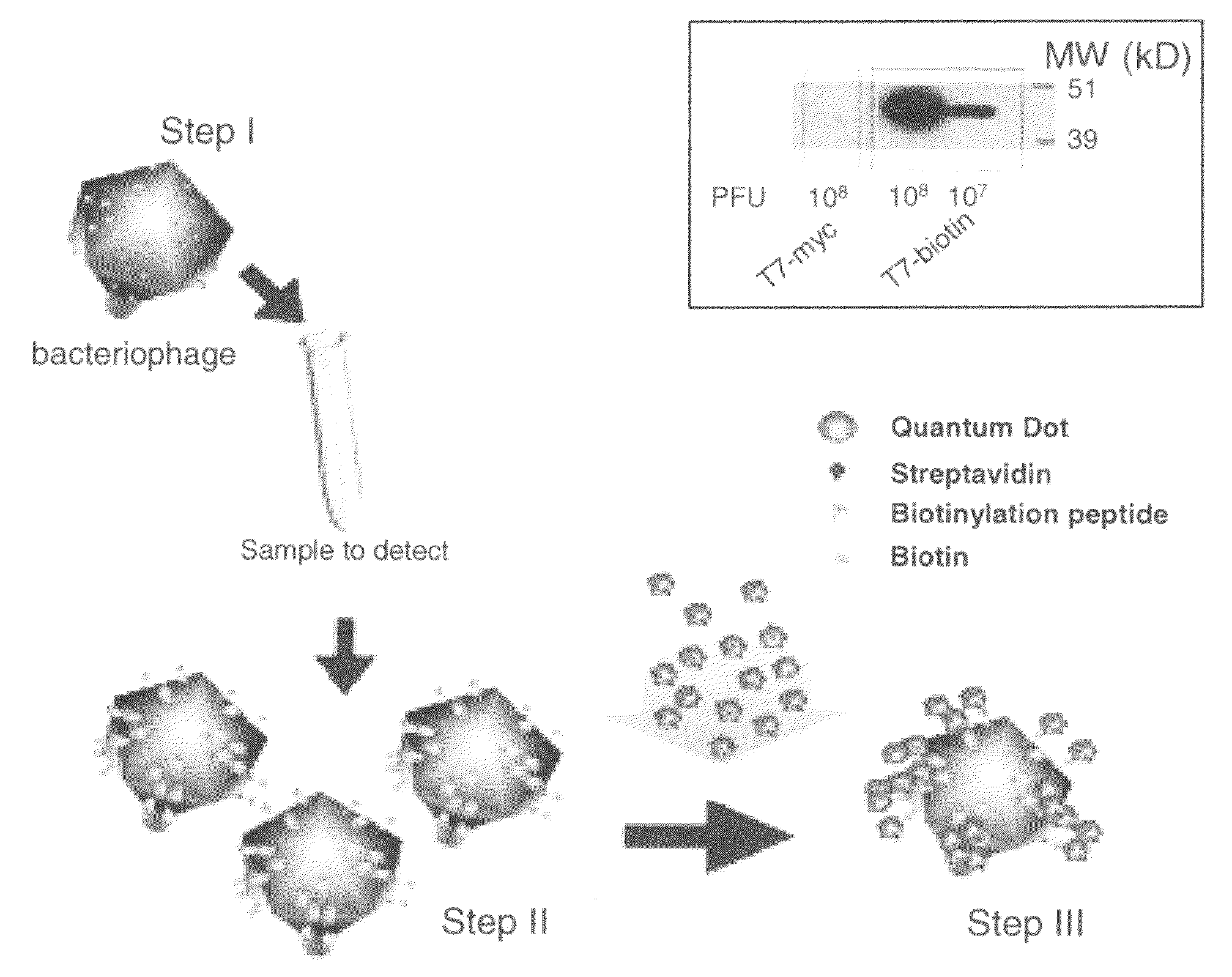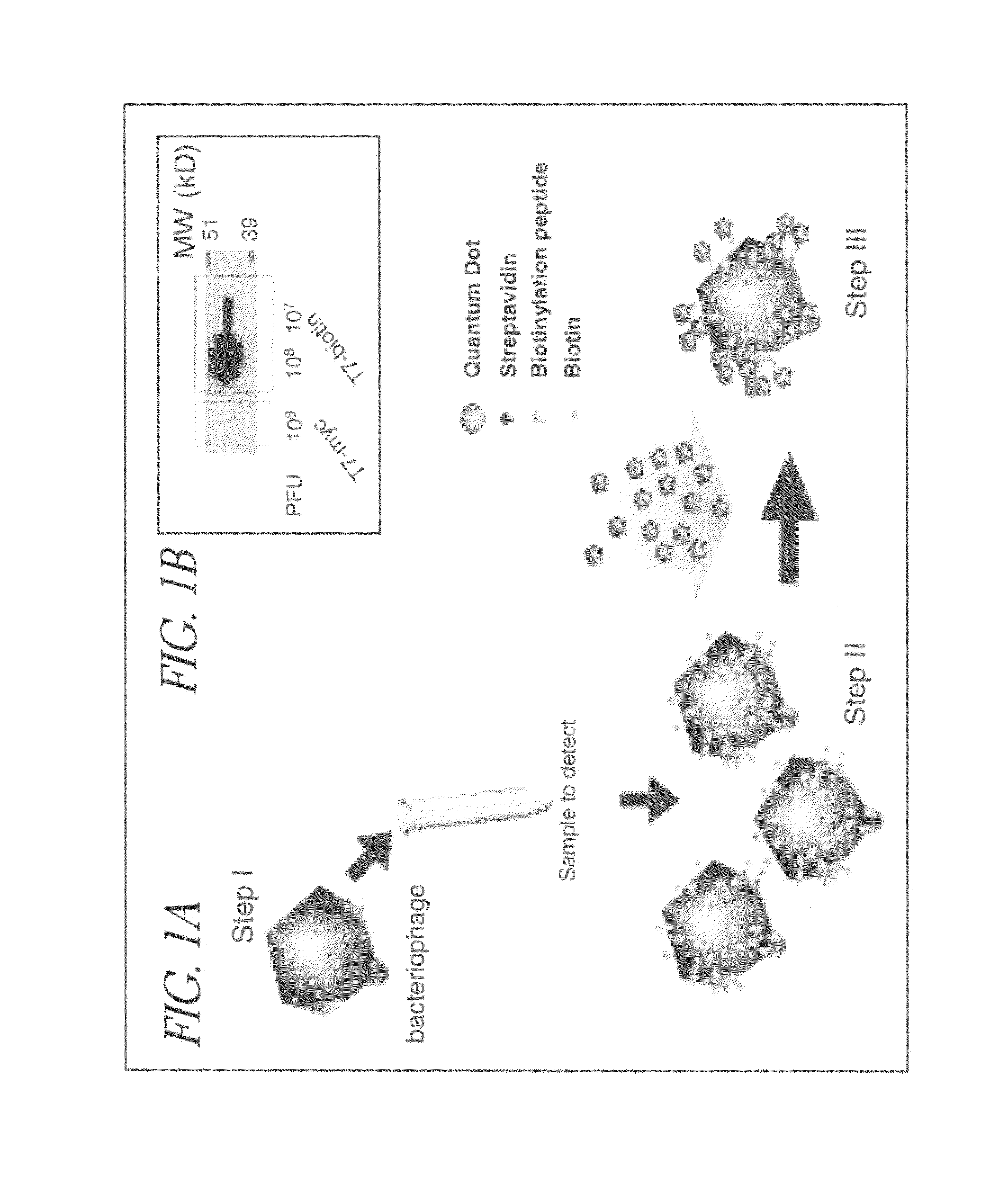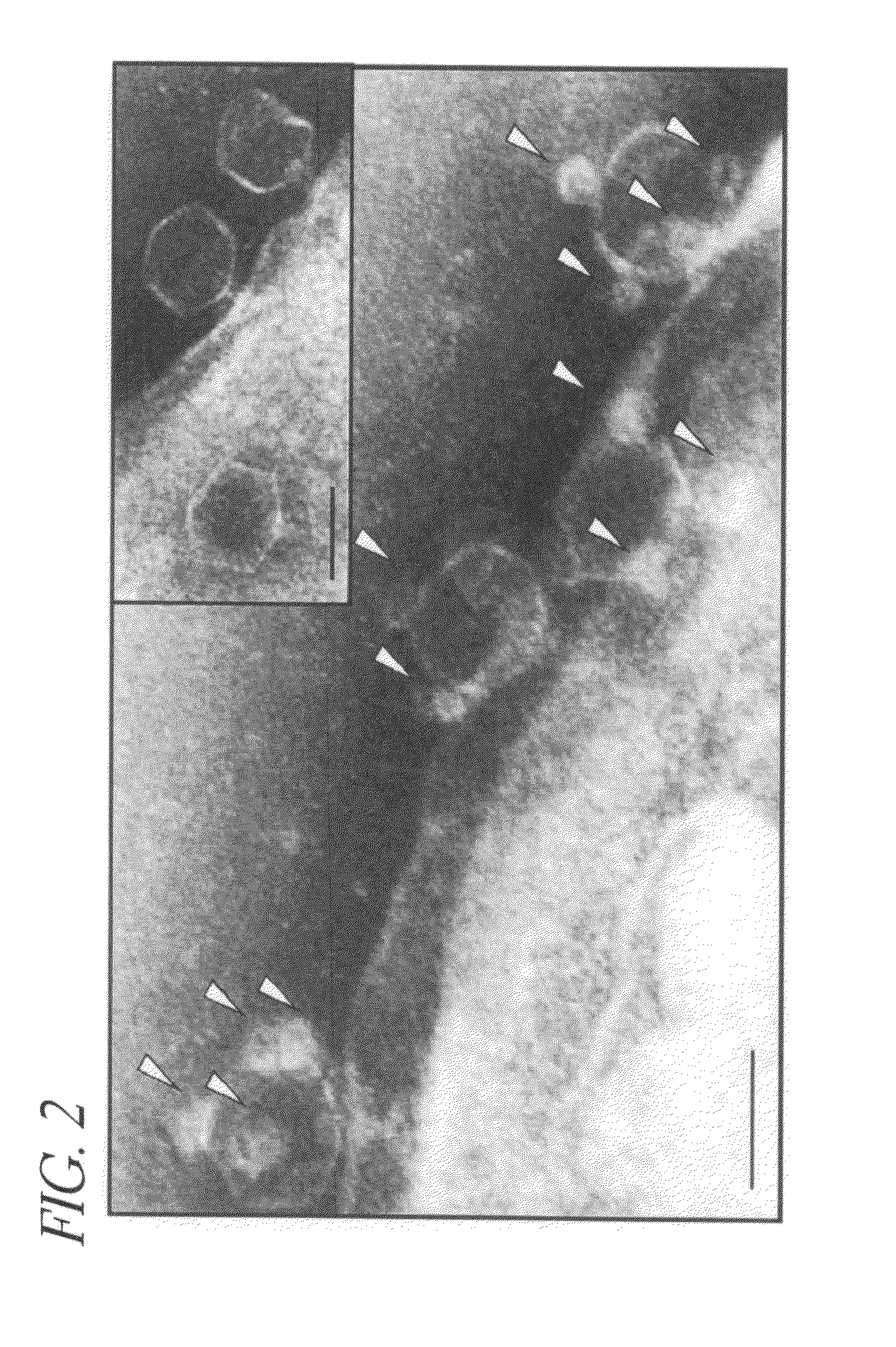Bacteriophage/Quantum-Dot (Phage-QD) Nanocomplex to Detect Biological Targets in Clinical and Environmental Isolates
a technology of phage-qd and nanocomplex, which is applied in the field of bacteria/quantumdot (phage-qd) nanocomplex to detect biological targets in clinical and environmental isolates, can solve the problems of low signal-to-noise ratio due to detection pathogenic bacteria, low sensitivity and rapidity, and low photo-stability such as fast photobleaching
- Summary
- Abstract
- Description
- Claims
- Application Information
AI Technical Summary
Benefits of technology
Problems solved by technology
Method used
Image
Examples
example 1
Engineering the T7-Bio and T7-Myc Phages
[0093]We used the T7Select System (Novagen) for engineering and packaging of DNA into T7 phage particles. For the T7-bio we used two phosphorylated primers: 3′L6bio and 5′L6bio, containing overhang sequences for ligation with HindIII and EcoRI digested phage arms DNA, respectively (upper case), a 6 amino acid linker coding sequence (underlined), followed by the biotinylation peptide coding DNA (lower case) and a stop codon (bold):
3′L6bio:(SEQ ID NO: 6)5′-AGCTTttagtgccattcgattttctgagcttcgaagatgtcgttcaggcctgaaccacgcggccgcaacG-3′5′L6bio:(SEQ ID NO: 7)5′-AATTCgttgcggccgcgtggttcaggcctgaacgacatcttcgaagctcagaaaatcgaatggcactaaA-3′.
[0094]The primers were annealed to each other by heating at 95° C. for 5 min in ligation buffer and cooling at room temperature, ligation to T7 arms was done as recommended by the manufacturer. For the engineering of the T7-myc phage we used the primers MYC1: 5′-AATTCtggtggcagcggatctgagcagaagctgatcagcgaggaagatcttaattaaA-3′ (...
example 2
Engineered Phage Containing birA Gene and Biotinylation Domain
[0099]The birA gene was engineered into phage along with a biotinylation domain to allow more of the displayed peptides to be biotinylated, thereby increasing the detection sensitivity. The BPL of E. coli, birA gene, was clone as a transcriptional fusion with the phage Capsid-bio under the phage promoter.
[0100]This engineered phage (capsid-bio-birA) had about a 100 fold higher level of biotinylation than the Capsid-bio engineered phage as judged by western blot analysis with streptavidin-HRP. This new engineered phage overcomes potential limitation of the endogenous BirA protein such that most of the displayed biotinylation domain becomes biotinylated.
example 3
Phage-QD Complexes and Analysis of Quantized Levels of QDs in Complexes Binding to Bacteria
[0101]A fluorescence image of phage-QD complexes' spread on a glass coverslip is shown in FIG. 18A (top). Each bright spot in the image exhibits fluorescence signal from one or two of QDs attached onto different phage. The image was time-averaged from 500 movie frames taken at the rate of 100 ms per frame. In FIG. 18A (bottom), a time-transient intensity along the line of (a-b) shows that the fluorescent spot near “a” shows a single level quantized blinking indicative of one QD, while the other fluorescent spot near “b” shows two-levels of quantized blinking from two QDs. m1 and m2 in the intensity scale bar correspond to two local maxima of the (occurrence vs. intensity) histogram calculated from the intensity fluctuation of the 2 QD spot.
[0102]Time-averaged bright field and fluorescence imaging of bacteria cells was done after an attempt to bind maximum number of phage-QD complexes by adding...
PUM
| Property | Measurement | Unit |
|---|---|---|
| time | aaaaa | aaaaa |
| full width half maximum | aaaaa | aaaaa |
| mass | aaaaa | aaaaa |
Abstract
Description
Claims
Application Information
 Login to View More
Login to View More - R&D
- Intellectual Property
- Life Sciences
- Materials
- Tech Scout
- Unparalleled Data Quality
- Higher Quality Content
- 60% Fewer Hallucinations
Browse by: Latest US Patents, China's latest patents, Technical Efficacy Thesaurus, Application Domain, Technology Topic, Popular Technical Reports.
© 2025 PatSnap. All rights reserved.Legal|Privacy policy|Modern Slavery Act Transparency Statement|Sitemap|About US| Contact US: help@patsnap.com



